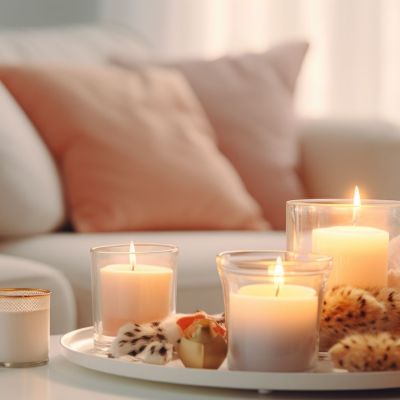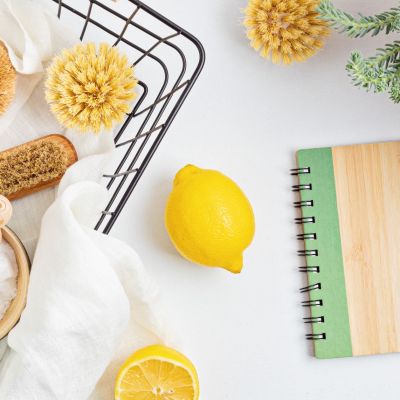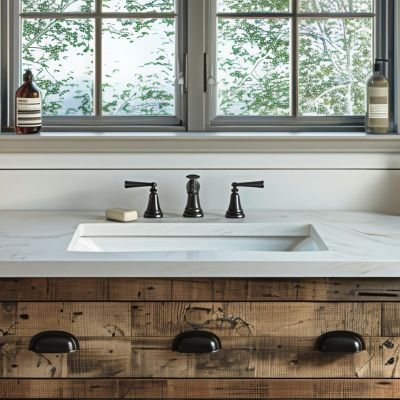Organizing Mastery: My Ultimate Tips for a Clutter-Free Life!
After years of organizing and refining my techniques, I’ve decided to bring everything I’ve learned together in one place. Whether it’s organizing my own home or collaborating with others, this is a collection of the most practical and effective tips I’ve discovered over time. Instead of sifting through endless posts, here’s the ultimate guide packed with organizing wisdom, ideal for projects of any size.
My Top Organizing Tips!
This post will be a treasure trove of knowledge! I’m combining the best of the best into one incredibly helpful, comprehensive resource, where you can find answers for a variety of organizing challenges.
Labeling 101: Quick & Easy Labeling Methods
Over the years, I’ve tried countless types of labels—from plastic tags to label makers, stickers, and chalk markers. While each has its own strengths, I’ve narrowed it down to a few favorites I reach for time and time again. These methods are simple, cost-effective, and versatile—no fancy tools needed.
Practical, Everyday Storage Solutions!
Raising three kids has taught me one essential truth: storage can get expensive, and our needs are always changing. Gone are the days of buying pretty baskets just for decoration. Now, I’m all about storage that’s both functional and long-lasting. In this final post of the series, I’m sharing a list of storage solutions I love, along with tips for making the most of every space.
Let’s dive into Part 2 of my four-part series: My Top Organizing Tips! Below, you’ll find 20 valuable pieces of advice that have been pivotal in streamlining our home, saving time, reducing stress, and improving habits.
(I’ve touched on some of these tips in my previous printables, but they’re so essential that they’re worth repeating.)
1. Understand Your “Why”
Before diving into any organizing project, take a moment to reflect on why it’s important to you. Everyone’s “why” is different, but it’s key to remember that organizing will save you time, reduce stress, bring you joy, and even save money. Focus on the benefits rather than striving for perfection or comparing yourself to others. Organizing should be a tool to improve your life, not a cure-all for everything.
For instance, we’ve worked hard to organize our fridge. Our “why”? Healthier snacks, fewer takeout meals, and reduced food waste—saving both money and sanity.
2. Get Motivated
Starting is often the hardest part! If you feel overwhelmed by the number of areas you want to organize, begin by focusing on one small project at a time. It’s best to prioritize based on what’s causing you the most stress or inefficiency, like wasting time searching for things or spending too much money.
And don’t forget to make it fun! For me, injecting a creative element (such as making labels or painting) is what keeps me motivated. Sometimes, the excitement of the fun parts helps me power through the messy stages.
3. Create a Small Organizing Tool Kit
There are a few tools I consistently reach for while organizing, so I keep them all in one handy container. Here’s what’s always in my kit:
- Phone: For time tracking and listening to music or podcasts.
- Headphones: Keeps me focused and minimizes distractions.
- Sorting Indicators: Free printable sorting labels to keep piles organized.
- Cleaner: Always start with a clean surface!
- Rubber Bands & Zip Bags: Great for bundling or categorizing smaller items.
- Scissors: Perfect for cutting strings, packages, or ties.
- Notepad, Flags, Pen, & Sharpie: For jotting down ideas, making temporary labels, or noting down what needs labeling.
- Label Maker: A must-have for professional-looking organization!
4. Start with a Blank Slate
When tackling an organizing task, it’s crucial to empty the space completely—whether it’s a closet, drawer, or fridge. This gives you a fresh start, allows for cleaning, and encourages you to rethink how the space should be organized.
5. Organize by Category
For larger organizing tasks, group your items by category. This may seem overwhelming at first, but it’s incredibly effective. For example, when organizing bathroom items, gather everything from all bathrooms and assess what you have. You’ll be able to see duplicate items, identify what’s necessary, and decide where things should go. The same approach works for clothing, kitchen tools, office supplies, and more.
6. Zoning Laws
Keeping similar items together in specific zones around the house reduces time spent searching for things. For instance, designate one spot for all your tech-related items—chargers, batteries, remotes, etc.—so everyone knows where to look. This “zoning” concept applies everywhere, from the kitchen to your garage. Organizing by function helps everyone maintain order.
7. Give Everything a Proper Home
Clutter accumulates when things don’t have a designated place. When organizing, every item you touch needs to have a home. If something doesn’t have a place, it will keep adding to the chaos. Also, when new items come in, get rid of something old right away to prevent accumulation.
8. More Items, More Troubles
While I’m not a minimalist, I’ve learned firsthand that the more things you have, the more time, space, and money you’ll need to manage them. Extra clothes, toys, or gadgets not only contribute to clutter but also require maintenance, cleaning, and organizing. Keep this in mind as you curate your possessions.
9. Should It Stay or Should It Go?
Letting go of items can be a daunting part of organizing. Sometimes, we hold onto things because of sentimentality, but consider how attached you really are to each item. Ask yourself if the item still serves a purpose or if it’s simply taking up space. One helpful tip is to digitally photograph items with sentimental value before parting with them. You can also designate a memory box to hold the most important items.
10. A Team Effort
If you’re organizing for the whole family, make it a group activity. Ask for input, and involve everyone in the process. It’s also important to consider everyone’s habits and routines when setting up systems. For example, if your partner always leaves keys in one spot, create a designated tray in that area to make the routine more intentional.
11. Keep It Simple
Simplicity is key when it comes to maintaining organization. Use open-top containers or baskets to make it easy to put things away quickly. Avoid lidded containers for items that are used frequently, as they tend to slow down the process. If stacking is necessary, opt for pull-out drawers to make access easier.
12. Filing Isn’t Just for Paper
The filing system works for more than just paperwork. You can file clothing, bed linens, cleaning products, or even food! Filing allows you to see everything at a glance and ensures quick, easy access to what you need.
13. Split and Conquer
Use dividers in drawers and cabinets to keep things in place. This prevents items from shifting around and keeps everything organized and accessible. Dividers also encourage thoughtful packing, making it harder to just toss things in haphazardly.
By following these tips and creating a functional system tailored to your needs, you’ll enjoy a cleaner, more organized space—and the benefits will spread throughout your life! Stay tuned for even more practical tips and detailed ideas to help you take your organizing to the next level!
Think Vertically
Maximizing space is all about thinking beyond the floor. When you utilize vertical space, you can significantly increase your storage potential. Consider adding pegboards or wall organizers to your walls, installing high and narrow shelves, and making use of the back of doors and closets.
For more hallway wardrobe tips, check out our detailed guide.
Think Outside the Box
Your organizing solution doesn’t have to follow the traditional route. There’s a world of creativity out there—what’s “normal” to one person might not be to another. Tailor your systems to your routine, lifestyle, home, and personal style. What works for me may not work for you—and that’s completely okay! Some of the most innovative ideas come from people breaking away from the norm.
Take, for example, the concept of a family wardrobe. Typically, each person has their own closet or dresser, but some families create a shared space for everyone’s clothes. This saves time with laundry, makes getting multiple kids ready for school in the morning much easier, and streamlines packing for trips. It might not be the conventional approach, but if it simplifies your life, it’s a win!
In the image above, you can see how we’ve made room for less conventional items in our own wardrobe. By incorporating a space for filing and even storing a bulky paper shredder and a waterproof fireproof safe, we’ve made use of what would otherwise be wasted space.
Maximize Your Closets
When it comes to organizing closets, don’t settle for the default shelving and hanging rod that’s typically installed. While a floor-to-ceiling closet system is ideal, it might not always be in the budget. But fear not—closets can still be maximized by adding things like a dresser or shoe shelf under the hanging items, raising the shelves with a bookcase, or adding a second rod halfway down to create a double-hanging area. There are countless affordable closet organizers available at most home stores, and they pair well with your existing storage to help maximize closet capacity.
If you’re looking for inspiration for organizing a teen’s wardrobe, check out our dedicated post.
To Label or Not to Label?
Labeling is a personal choice—there’s no one-size-fits-all answer. The main purpose of labels is to create recognition and order. However, labels are especially helpful for safety and communication purposes.
Consider labeling for these reasons:
- To alert others about food allergies or ingredients
- To track dates on food containers and leftovers
- To identify fragile or hazardous items
- To organize similar items and keep track of what’s inside bins or boxes
- To guide kids in putting things away or locating specific items
- To mark ownership of items among family members
- To create consistency in routines for the whole family
Ultimately, whether or not you label comes down to your family’s needs. Some people find labels incredibly helpful, while others prefer not to use them.
In our next post, we’ll dive into some of my favorite labeling tools. If you’re looking for a temporary solution, dry-erase labels are a great option!
Contain Your Excitement!
Organizing doesn’t have to cost you anything—most of it is about purging, categorizing, and creating systems. But let’s be real: storage containers are an essential part of the process! They allow you to divide, store, and organize your belongings, making your systems sustainable and accessible.
Here’s a pro tip: before rushing to buy containers, live with your newly organized space for a while. This will give you time to make sure it’s working for you and help you avoid over-purchasing storage bins. Plus, you might even discover hidden storage spaces you hadn’t thought of before!
Bonus Tip: When you buy storage containers, keep the receipt and test them out before committing. This makes returns much easier if they don’t fit your needs.
For even more deep cupboard organizing tips, check out our guide here.
Make Changes as You Go
As you work through your organizing journey, remember that it’s okay if things don’t work perfectly on the first try. Be kind to yourself, stay positive, and try again. Your needs are always evolving, so your systems should too. Organizing is a process, not a one-time task. If you’re stuck or need new ideas, don’t hesitate to ask for help from friends, family, or professional organizers. Where there’s a will, there’s always a way!
Above, you can see how our awkward coat closet went through several iterations before we reached a place of simple maintenance and organization.
A Regular Home Run
Now that you’ve put in the hard work organizing your space or setting up a new system, you might feel like you’re done—but you’re only halfway there! The key to long-term success is maintaining the systems you’ve created. An inbox won’t keep your papers organized if you’re still tossing them on the counter or neglecting to clear it regularly.
Keeping a tidy home requires consistency and discipline, which is why some of the tips above—especially the “less is more” approach—are so valuable. Once your systems are in place and everything has its proper home, maintaining order will get easier and easier.
Building new habits takes time. And when you’re trying to encourage positive changes in others, it can be challenging. We’ve found that using a Habit Tracker has been incredibly helpful in maintaining our systems and motivating our family. Whether it’s getting the kids to put their things away after school, reminding my husband to get his clothes in the hamper daily, or keeping our bathroom counter clear, this tracker has helped us build positive habits and stay accountable.
Wow! That’s a lot of information! I’m passionate about this topic, so this post started with 8 tips, but ended up with 20—and I could probably keep going! Stay tuned for my next post on my favorite labeling products and tips.
Happy organizing!




